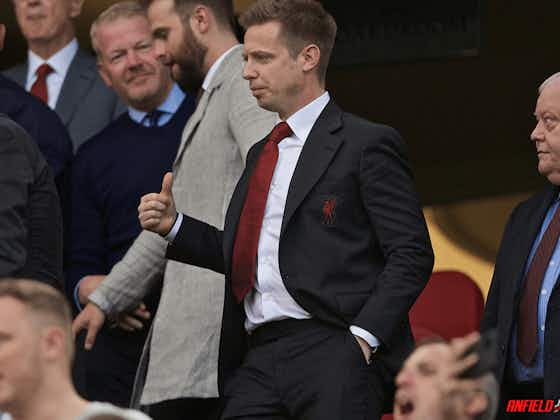Anfield Index
·21 July 2025
Revealed: The Truth Behind Liverpool’s £250m Summer Spending Spree

In partnership with
Yahoo sportsAnfield Index
·21 July 2025

As the summer window rolls on and Liverpool’s outlay climbs past the £250m mark — with Hugo Ekitike now the next expected arrival after Florian Wirtz, Jeremie Frimpong, and Milos Kerkez — the usual noise from rival fanbases is beginning to bubble. “How can they afford this?” they ask, peering over their stagnant rebuilds or club-based catastrophes. The short answer is that they don’t understand how Liverpool works. The long answer? Michael Edwards is something that I have been waiting for since his return.
Liverpool’s recruitment under Edwards has never been about throwing cash at the wall or making emotion-based decisions. It’s about timing, resale value, and extracting every ounce of financial efficiency from a squad before reinvesting it, almost like-for-like, in players with higher ceilings. Spending £70m on Ekitike or £115m on Wirtz doesn’t happen in a vacuum — it’s part of a carefully engineered cycle. A cycle that’s now entering its third iteration and could lead to a dynasty of success.
The post-Klopp rebuild isn’t being fuelled by deep pockets, it’s being fuelled by deep and brilliant planning. The truth is Liverpool spend big because they sell smart — and few in world football are better at this than Edwards and, now, Richard Hughes.
Go back a few years and you’ll find the same routine. Philippe Coutinho leaves for £142m and in come Alisson Becker and Virgil van Dijk. Rhian Brewster fetches £23.5m from Sheffield United without ever starting a league game. Dominic Solanke goes for £19m, with little to justify that fee back then. Neco Williams for £17m when he was at best a sporadic understudy. There’s a pattern — players surplus to elite needs are sold at a premium, and the funds are funnelled back into ready-made upgrades or long-term projects.
And, repeat.
Fast forward to summer 2025 and it’s the same old trick — only on a more accelerated timeline and urgency. Luis Díaz and Darwin Núñez are expected to fetch a combined £140m from Saudi clubs or European suitors. Harvey Elliott looks set to join West Ham for close to £50m. Caoimhín Kelleher has left for just under £20m. Even fringe players like Nat Phillips, and Owen Beck — reportedly bound for Rangers at £10m — are used to generate value in the market. Jarell Quansah has been sold for over £30m, whereas Tyler Morton, Federico Chiesa (if deemed expendable), and even Kostas Tsimikas could all contribute to a summer sales haul that breaks the £250m barrier without blinking.
This isn’t accidental or by chance. This is Liverpool running like a business, not a billionaire’s toy.
So yes, Liverpool might still sign Alexander Isak. Yes, Rodrygo might still arrive. Yes, Marc Guéhi might follow if Ibrahima Konaté is offloaded to Real Madrid. But none of this is reckless or reactionary — it’s a reflection of a club that refuses to rot while rivals chase the same dream with half the structure and none of the clarity. FSG has tasked a brilliant executive with full power of this illustrious club with the promise that with continual regeneration, success and asset worth will come.
Michael Edwards was brought back to bring order, and in Richard Hughes, he’s found a partner who understands the landscape of modern football better than most. Together, they’re pushing Liverpool towards that rarest of sporting models: a sustainable superclub that understands how to sustain long-term success. The Merseyside giant can sign world-class talent, challenge for major trophies, and still post respectable balance sheets.
The money is coming from within. From the smart sales of yesterday and the ruthless decisions of today. And if some fanbases can’t get their heads around that, it’s probably because their clubs don’t have anyone as capable pulling the strings and refuse to accept the brilliance which is unfolding.
Let the rest of the nation moan about money. Liverpool will just keep building and altering that famous wall of achievements.






























































